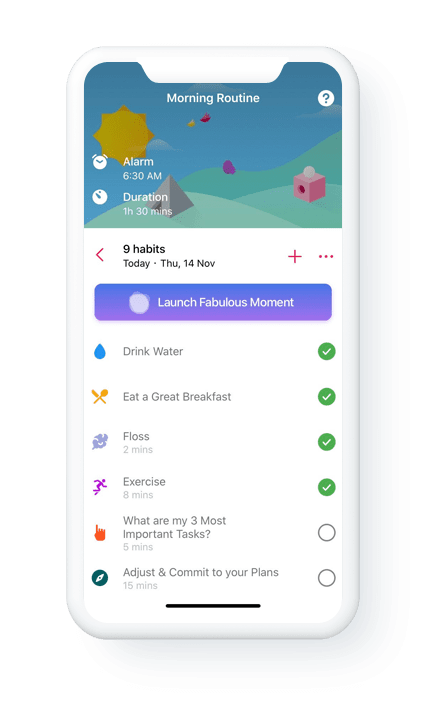When famous stand-up comedians step onstage, they’re met with a wave of claps and cheers from the audience. This round of applause is the crowd’s way of pumping them with confidence. It’s almost like they’re saying, “I believe in you. I know you’re going to make me laugh tonight.” On the other hand, amateurs sometimes get a quieter greeting. They don’t want to bomb, and the audience doesn’t want them to either.
When comedians light up the stage, you’re watching their highlight reel. What you’re not seeing are the failed shows that pushed them to where they are now. It turns out the best comics have had their fair share of terrible sets. Failure might even be what gives them an edge on their competition, but it doesn’t feel that way when it happens to you. Next time you feel discouraged by a less-than-stellar performance, take 5 minutes to reframe it with A Fabulous Uplifting MMF.
Now, if you’re familiar with the widely-held belief that the recipe for excellence is simply 10,000 hours of deliberate practice, you might think consistent, hard work is all that matters. But consider the funniest person you’ve ever seen: they probably don’t attribute the explosive laughter they evoke to any amount of hours they’ve spent telling jokes. The journey of anyone great is made up of so much more than time.
Even Malcolm Gladwell himself, the man behind the spread of this 10,000 hour idea, said there are plenty factors besides practice that go into greatness. There are twists and turns, peaks and valleys, triumphs and plenty of failure on the path to getting good at anything.
10,000 hours isn’t the ticket to excellence, but that doesn’t mean it isn’t perfect place to start.
What 10,000 hours taught us
By spreading the idea that it takes 10,000 hours to achieve mastery, Gladwell shot down some common misconceptions about greatness:
- The best were born with natural talent.
- There’s a “quick fix” for authentic, significant improvement.
The 10,000 hour rule gave people a reality check: there is a massive time commitment required to achieve peak performance.
What 10,000 hours got wrong
- Mastery is a journey with no destination.
Even though he might have extended the timeline people associate with mastery, Gladwell inadvertently presented greatness as an endpoint. By offering a timeline, he also offered a finish line.
True masters believe they’re never done improving. Whether they’ve put in 10,000 hours or 20,000, they’re on a lifelong journey to greatness. By refusing to limit their potential, their destination forever evades them. That might just be what gives them their edge.
- There is no formula for mastery.
The path to becoming excellent at something isn’t just never-ending, it’s also never linear. Even if your effort is consistent and reliable, your improvement won’t be. As aikido master George Leonard outlines in his book Mastery, improvement happens in breakthrough moments here and there between spans of time where it feels like you’ve hit a wall in your progress.
- Practice isn’t everything.
So, what matters besides how much you practice? Complete involvement in the work, constant feedback, and a culture of growth
The greats ensure they overcome their OK plateaus by putting feedback loops in their environment that help them steer clear of complacency.
After about 50 hours of training a skill, you start being able to do it without paying complete attention. This is helpful for things like walking or driving, but it’s the kiss of death when it comes to improvement. Top performers rail against automation, and they design conditions that ensure they stay “checked in” during practice.
With stand-up comedy, the feedback loop is built-in: either you’re getting laughs or you’re getting crickets. But with most pursuits, you need to design the loop yourself.
How can you build effective feedback loops?
Find a teacher that knows the best and most effective methods.
A good teacher can show you how to do whatever it is you wish to do, but what’s even more valuable is that they can show you how to think about the skill you’re trying to build. It usually takes a new way of thinking to reach a new level of performance. For instance, someone who wants to jump higher could hop around till they’re blue in the face and see no progress. What they might might not realize is that deep squats with heavy weights is the best way to improve jumping. Why? Because the strength gains transfer directly to explosiveness. Teachers can show us paths to to progress that aren’t always intuitive.
Create a routine that lets you focus on the task itself.
Minimize decision-making around logistics. Knowing when, where, how long, and how often you practice frees up your mental energy to go deep during training. Next time you feel yourself dragging your feet, try the Just Get Started MMF.
Find your mental sweet spot. The mindset for growth balances ambition and patience. It’s the ability to see the distance between where you are now and where you want to be, and trusting that if you take the right actions, you can close that gap. The 10,000 hour rule shows us what can happen when we constantly seek improvement and trust the process. It might not give us the full picture of the road to mastery or show us how unpredictable it can be, but it does show us the universal starting point: a deep, enduring commitment.






